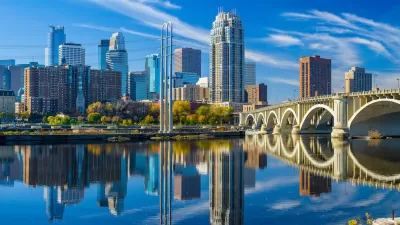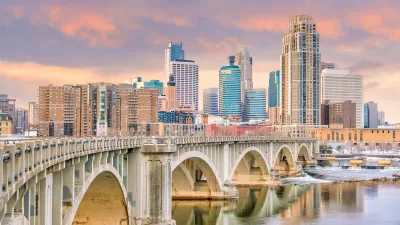Emily Badger explains how a Minneapolis-based non-profit organization is working to break the cycle of gentrification within artist communities by helping to create and preserve affordable space for artists and arts organizations.
Artists have long suffered from the "Soho effect", a title Badger says applies to artist communities who revitalize undesirable parts of cities and are then displaced once the area begins to grow and prices rise. As cities increasingly embrace revitalization through "creative placemaking", which aims to build communities around arts and cultural activities, the threat of the Soho effect becomes more widespread.
"It was insulting for people to sometimes say, ‘Oh, artists like to move, they're bohemians!' Who likes to be on the street and renegotiate a lease and carry all their equipment and try to create a new community and basically start all over?" states Kelley Lindquist, president of the non-profit group Artspace, a nonprofit real estate developer working to supply art communities with live/work spaces. Since its inception in 1979, the organization has "completed 30 live/work developments in 21 U.S. cities, with two more opening this fall, two more under construction, and another dozen in the pipeline."
There's ongoing debate about the strength of the connection between the arts and economic development. But, while "Artspace doesn't prove that artists can power the economy of whole cities," says Badger, it sends a clear message that art-based communities can thrive without becoming victims of their own success.
FULL STORY: The Key To A Thriving Creative Class? Give Artists Their Own Real Estate Developers

Manufactured Crisis: Losing the Nation’s Largest Source of Unsubsidized Affordable Housing
Manufactured housing communities have long been an affordable housing option for millions of people living in the U.S., but that affordability is disappearing rapidly. How did we get here?

Americans May Be Stuck — But Why?
Americans are moving a lot less than they once did, and that is a problem. While Yoni Applebaum, in his highly-publicized article Stuck, gets the reasons badly wrong, it's still important to ask: why are we moving so much less than before?

Using Old Oil and Gas Wells for Green Energy Storage
Penn State researchers have found that repurposing abandoned oil and gas wells for geothermal-assisted compressed-air energy storage can boost efficiency, reduce environmental risks, and support clean energy and job transitions.

Poorest NYC Neighborhoods Pay Price for Delivery Boom
The rise of ‘last-mile’ e-commerce warehouses — and their attendant truck traffic and air pollution — is disproportionately impacting the most historically disadvantaged parts of the city.

Greening Oakland’s School Grounds
With help from community partners like the Trust for Public Land, Oakland Unified School District is turning barren, asphalt-covered schoolyards into vibrant, green spaces that support outdoor learning, play, and student well-being.

California Governor Suspends CEQA Reviews for Utilities in Fire Areas
Utility restoration efforts in areas affected by the January wildfires in Los Angeles will be exempt from environmental regulations to speed up the rebuilding of essential infrastructure.
Urban Design for Planners 1: Software Tools
This six-course series explores essential urban design concepts using open source software and equips planners with the tools they need to participate fully in the urban design process.
Planning for Universal Design
Learn the tools for implementing Universal Design in planning regulations.
Heyer Gruel & Associates PA
City of Moreno Valley
Institute for Housing and Urban Development Studies (IHS)
City of Grandview
Harvard GSD Executive Education
Salt Lake City
NYU Wagner Graduate School of Public Service
City of Cambridge, Maryland




























